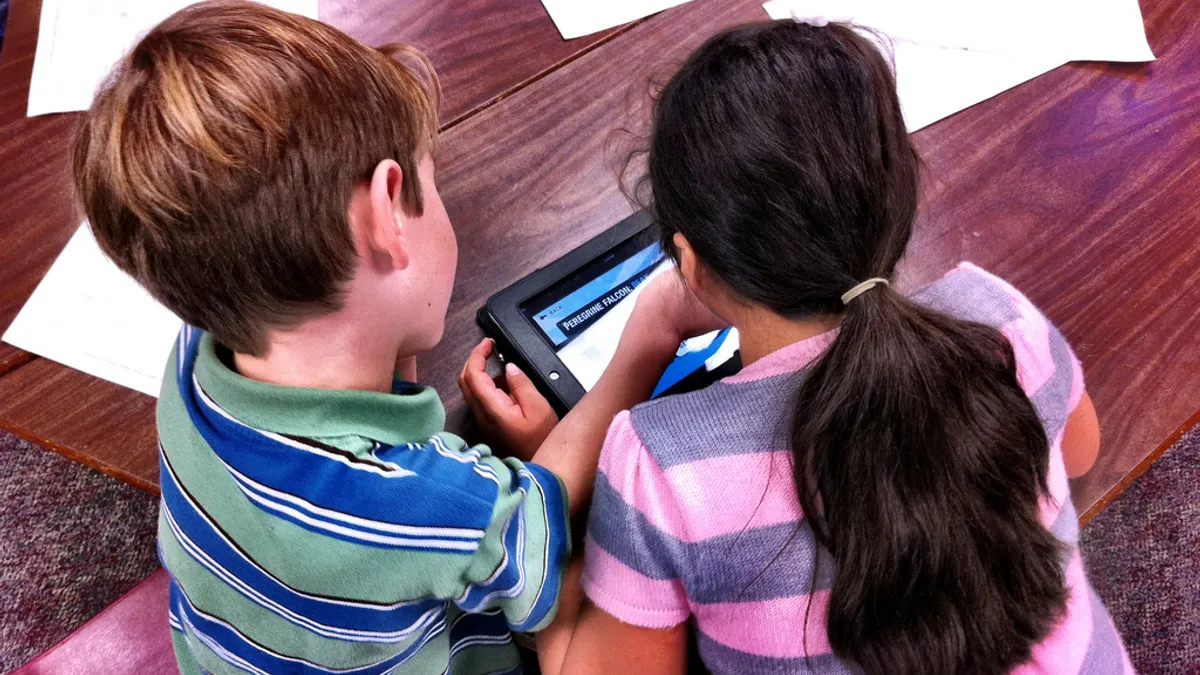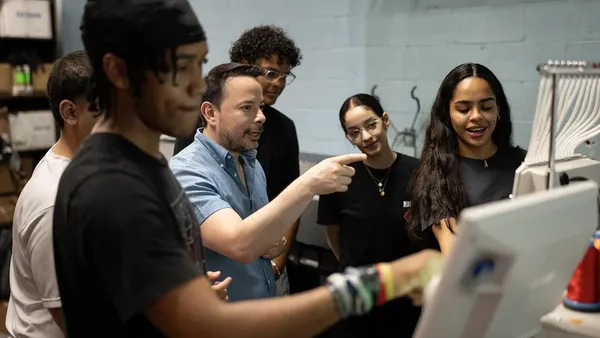Dive Brief:
- The dean of instruction at a Denver high school believes that if teachers could use just 1,000 words — which takes up about 9 minutes — of whole-group instruction each class period, students would have more time to explore, think, create and collaborate, he wrote in eSchoolNews.
- Chris DeRemer has put the idea into practice with his students at Manual High School during writing exercises. After students received a prompt, rubric, assessment and other materials, DeRemer presented a 1,000-word lecture that preceded a writer's workshop. And with less time spent on the lecture, DeRemer writes, students had more time to engage in deeper learning.
- However, DeRemer says, the 1,000-word method does require organization, responsibility and planning from teachers, and before the 1,000-word instruction, the learning target, agenda and assessment should be clear to the class. This kind of instruction also means the students' task would have to be "engaging, extended, and meaningful" and that they should be in a workshop environment that lends itself to collaboration.
Dive Insight:
Learning how to tell a story, hone a message, or present a lesson concisely is a powerful skill. Certainly, teachers already have constraints on their time — they must teach a lesson within a set time every day, if not within a class period, then over a semester or a year. Often they feel bound to make sure these educational goals are covered, with time for students to explore or collaborate sacrificed.
Learning how to hone educational lectures to just 1,000 words — or about 9 minutes, the time to speak those words out loud — may hand some time back to students. Educators would get their lesson across to students more clearly, and children may end up with more practice time, able to do the actual work of putting the concepts and skills they’re learning in class into action.
Making sure students have more time to work together may do more than just impact and elevate their learning, as well. Having an opportunity to work collaboratively with their peers, may also support the development of social and emotional learning skills such as empathy in students.
That’s the findings of a 2012 study, “Benefits of collaborative learning,” published in the journal “Procedia - Social and Behavioral Sciences,” which found that collaborative learning, when compared to “competitive and individualistic efforts, has numerous benefits and typically results in higher achievement and greater productivity, more caring, supportive and committed relationships; and greater psychological health, social competence, and self esteem,” wrote the authors.
Administrators should make sure students are learning the material they need to succeed academically and take the next steps in their education. Education leaders should, as well, source avenues that not only develop learners, but also well-rounded people who are able to connect and communicate with their peers.





 Dive Awards
Dive Awards





